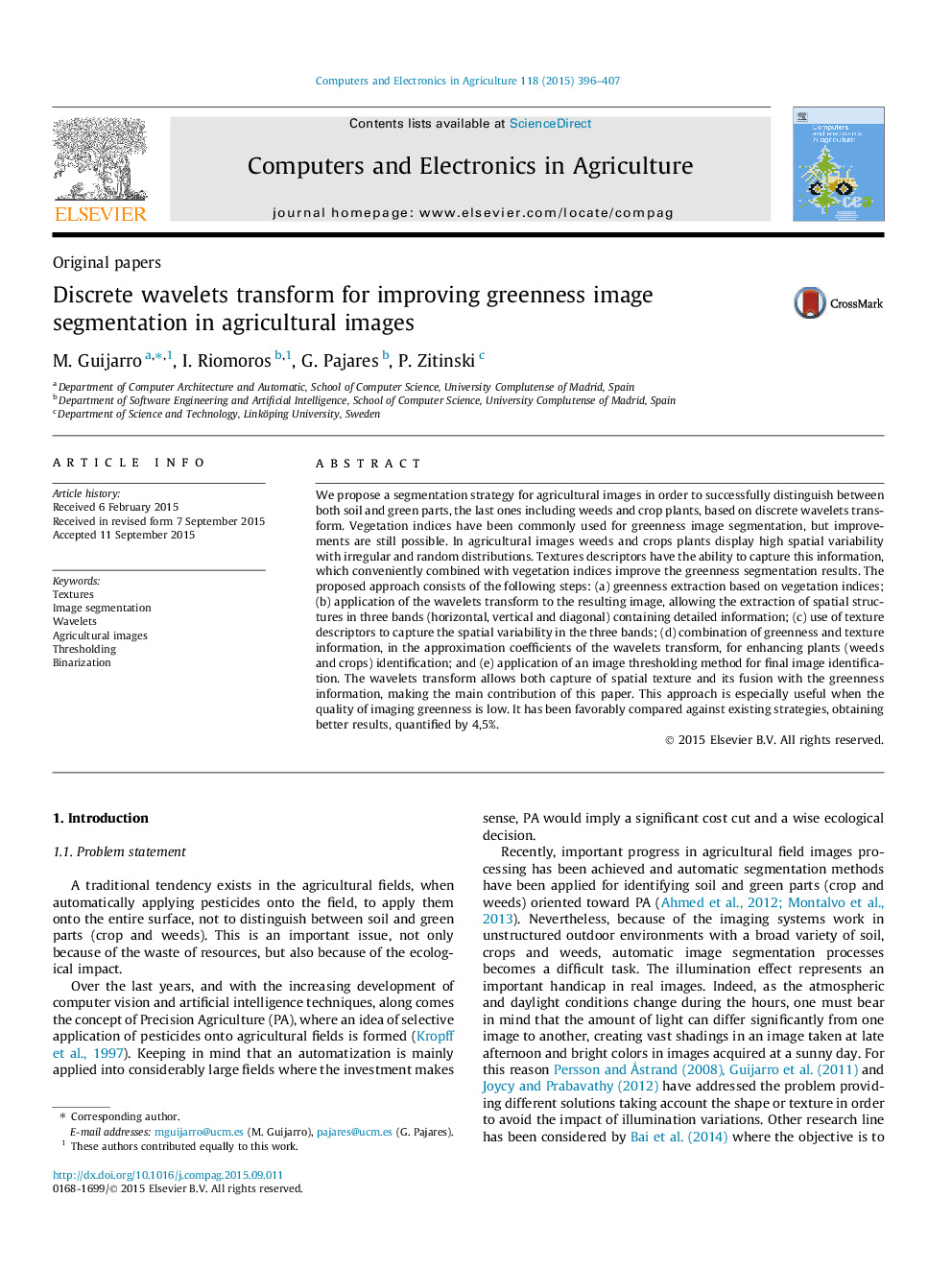| Article ID | Journal | Published Year | Pages | File Type |
|---|---|---|---|---|
| 84107 | Computers and Electronics in Agriculture | 2015 | 12 Pages |
•Image segmentation and classification in crops with green plants, soil and sky.•Image automatic green segmentation.•Improvement of greenness index based on discrete wavelets transform.•Design of a new strategy of segmentation for agricultural images.
We propose a segmentation strategy for agricultural images in order to successfully distinguish between both soil and green parts, the last ones including weeds and crop plants, based on discrete wavelets transform. Vegetation indices have been commonly used for greenness image segmentation, but improvements are still possible. In agricultural images weeds and crops plants display high spatial variability with irregular and random distributions. Textures descriptors have the ability to capture this information, which conveniently combined with vegetation indices improve the greenness segmentation results. The proposed approach consists of the following steps: (a) greenness extraction based on vegetation indices; (b) application of the wavelets transform to the resulting image, allowing the extraction of spatial structures in three bands (horizontal, vertical and diagonal) containing detailed information; (c) use of texture descriptors to capture the spatial variability in the three bands; (d) combination of greenness and texture information, in the approximation coefficients of the wavelets transform, for enhancing plants (weeds and crops) identification; and (e) application of an image thresholding method for final image identification. The wavelets transform allows both capture of spatial texture and its fusion with the greenness information, making the main contribution of this paper. This approach is especially useful when the quality of imaging greenness is low. It has been favorably compared against existing strategies, obtaining better results, quantified by 4,5%.
